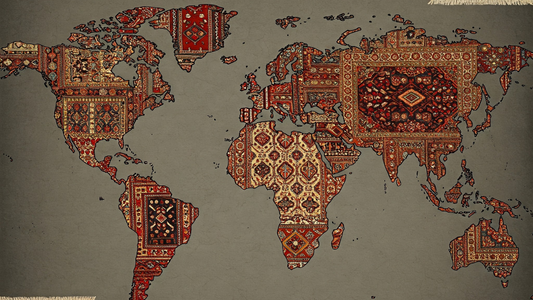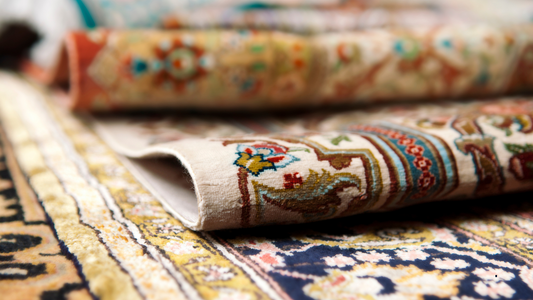You've likely heard the terms "Persian rug" and "Oriental rug" used interchangeably. But are they really the same? The answer, like the intricate patterns on the rugs themselves, is nuanced. Let's unravel the differences between these two captivating categories.
The Short Answer: All Persian rugs are Oriental rugs, but not all Oriental rugs are Persian. Think of it like squares and rectangles: a square is always a rectangle, but a rectangle isn't always a square.
Here's a deeper dive into what sets them apart:
1. Origin: A Geographical Tale
- Persian Rugs: These treasures hail exclusively from Iran (formerly Persia). The term "Persian" signifies the unique artistry and heritage of Iranian rug weaving, a tradition spanning millennia.
- Oriental Rugs: This is the umbrella term, encompassing rugs woven in a vast region stretching across Asia and parts of the Middle East. Think countries like India, China, Turkey, Afghanistan, Pakistan, Russia, and the Central Asian republics.
2. Design: A World of Patterns
- Persian Rugs: Known for their breathtaking detail and symmetry, Persian rugs often feature intricate floral, geometric, medallion, and curvilinear patterns. Regional styles, like those from Isfahan, Kashan, Tabriz, and Qom, boast distinctive designs.
- Oriental Rugs: This category offers a wider array of designs. While some Oriental rugs share similarities with Persian patterns, others showcase animal motifs, abstract designs, and tribal or folk art. For example, Turkish rugs often display bold geometric patterns, while Chinese rugs might feature dragons and symbolic imagery.
3. Weaving Techniques: The Art of the Knot
- Persian Rugs: Typically woven using the asymmetrical (Persian) knot, which allows for finer detail and subtle variations in the weave.
- Oriental Rugs: While the Persian knot is used in some regions, others employ different techniques. Turkish rugs, for instance, often feature the symmetrical (Ghiordes) knot, resulting in a firmer texture.
4. Materials: From Wool to Silk
- Persian Rugs: Traditionally crafted from high-quality wool, silk, or a combination of both. The finest examples often incorporate silk for added luster.
- Oriental Rugs: Materials vary depending on the region. While wool is common, some Oriental rugs, particularly those from China or India, may use cotton or even bamboo silk.
5. Color Palette: A Spectrum of Expression
- Persian Rugs: Tend to feature rich, deep colors like reds, blues, and golds, often achieved through traditional vegetable dyeing techniques.
- Oriental Rugs: The color palette is diverse, reflecting regional traditions. Turkish rugs might showcase warm earth tones, while Chinese rugs may favor softer hues.
6. Cultural Significance: Woven Stories
- Persian Rugs: Deeply rooted in Iranian culture, these rugs often depict symbolic motifs that reflect Iranian history, religion, and national pride.
- Oriental Rugs: Each region imbues its rugs with its own cultural significance. Turkish rugs, for example, are linked to Ottoman culture, while Chinese rugs often feature Buddhist symbols.
7. Price and Value: An Investment in Art
- Persian Rugs: Often command higher prices due to their exceptional quality, craftsmanship, and historical significance.
- Oriental Rugs: Prices vary widely depending on origin, materials, and craftsmanship.
Quick Reference Table:
| Feature | Persian Rugs | Oriental Rugs |
|---|---|---|
| Origin | Iran (Persia) | Asia and parts of the Middle East |
| Design | Intricate, symmetrical, regional styles | Varied, regional influences, diverse motifs |
| Weaving Technique | Persian (asymmetrical) knot | Various knots, including Ghiordes (symmetrical) |
| Materials | Wool, silk, or a combination | Wool, cotton, silk, bamboo silk, region dependent |
| Color Palette | Rich, deep colors, often vegetable-dyed | Wide range, regional variations |
| Cultural Significance | Deeply tied to Iranian heritage | Regionally significant, reflects local culture |
| Price | Often higher | Varies widely
|
Understanding these distinctions can help you appreciate the rich tapestry of rug-making traditions and make informed choices when adding these beautiful pieces to your home. Contact us at Kirishian Rugs with your rug inspired questions.




